Guangyi Xu
Peking University, China
Abstract Title: Development of a Nomogram Prediction Model for MAFLD in Non-Obese Individuals Based on Glycolipid Metabolism Levels
Biography:
Guangyi Xu is currently pursuing her Ph.D. in Nursing Science at Peking University, one of Chinese most prestigious and leading institutions of higher education. She has already published 12 papers in renowned academic journals, including 6 as the first author. Her research contributions reflect a strong commitment to advancing the field of nursing through rigorous scientific inquiry.
Research Interest:
Biochemical indicators, including glycolipid metabolism, are pivotal in predicting metabolic-associated fatty liver disease (MAFLD) risk, but their efficacy in non-obese populations is uncertain.
Aim: To identify biochemical factors related to MAFLD in non-obese individuals and develop a predictive nomogram model for disease management.
Method: A retrospective study involving 711 participants from Linyi Cohort Study was conducted. The cohort was randomly divided into a modeling group (498 cases) and a validation group (213 cases) at a 7:3 ratio. Within the modeling group, participants were further classified into MAFLD (139 cases) and non-MAFLD (359 cases) groups. Logistic regression analysis was used to identify risk factors for MAFLD, and R software was employed to establish a nomogram prediction model. ROC curves were plotted to assess the model's discriminatory ability, and the predictive performance was validated and evaluated using the concordance index (C-index) and decision curve analysis (DCA).
Results: Multivariable logistic regression analysis revealed (Body Mass Index) BMI (OR = 1.402, 95% CI: 1.174-1.674), (High-Density Lipoprotein Cholesterol) HDLC (OR = 0.046, 95% CI: 0.005-0.480), (Glucose) GLU (OR = 2.090, 95% CI: 1.100-3.989), and insulin concentration (OR = 1.122, 95% CI: 1.031-1.221) as risk factors for MAFLD in non-obese individuals. The modeling group's ROC curve had an area under the curve (AUC) of 0.895, with good calibration (slope close to 1, χ² = 6.196, P = 0.626). External validation yielded an AUC of 0.918, also with good calibration (slope close to 1, χ² = 9.564, P = 0.297). DCA curves indicated high clinical utility of the nomogram model for predicting MAFLD in non-obese populations at high-risk threshold probabilities between 0.01 and 0.87.
Conclusion: BMI, HDLC, GLU, and insulin concentration are associated with MAFLD risk in non-obese populations. The nomogram model effectively predicts MAFLD risk in these individuals.
Key words: Metabolic-associated fatty liver disease; Glycolipid metabolism levels; Nomogram prediction model; non-obese populations; disease management.

